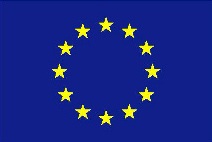Olkaria geothermal development, Kenya
a
One hundred kilometers north-west from Nairobi, the Olkaria Area in the Hell’s Gate National Park is home to wildlife, pastoralist Maasai communities and hot geothermal water.
Quick facts
Project size: Olkaria I and Olkaria IV capacity increase by 280 MW, potentially an additional 70MW increase of Olkaria I
Project costs:EUR 1 billion
Public financing:
Total: EUR 191 million + USD 1.025bn
Olkaria I and IV (2010):
EIB - EUR 119m
World Bank - USD 330m + USD 68m (2016)
KfW (German development agency) - USD 84m
AFD (French Development Agency) - USD 220m
JICA (Japan International Development Agency) - USD 323m
Olkaria I exansion (2016):
EIB - EUR 72m
Project promoter: Kenyan Electricity Generating Company, KenGen
In 2010, the European Investment Bank, together with the World Bank, Kreditanstalt für Wiederaufbau (KfW, Germany’s development bank), the French Development Agency (AFD) and Japanese development financiers (JICA) invested in the extension of the geothermal power plants Olkaria I and IV which resulted in the resettlement of four indigenous Maasai villages.
Various indigenous Maasai communities in the Olkaria region have been subjected to resettlements on several occasions over the last few decades as the region was first designated a national park and then later its geothermal power potential was to be exploited. The latest resettlement took place to make way for the Olkaria IV geothermal project and happened in breach of locals’ internationally respected rights.
The EIB has already been supporting geothermal installations in Olkaria since 1982 and has recently signed a contract to support additional 70 MW extension of Olkaria I. It is also considering a loan to a private company for a greenfield geothermal plant in the area – Akiira I.
Despite the EIB’s long experience in the region, together with the World Bank it failed to take into account that the Maasai are indigenous people and to negotiate resettlement accordingly. This has been recognised by both banks’ independent accountability mechanisms (the EIB's Complaints' Mechanism and the WB's Inspection Panel), after receiving several complaints from impacted people in the middle of 2014.
Hardships after resettlement
RAPland (RAP for Resettlement Action Plan), a community made up of four resettled villages, has nice and comfortable homes, but little else is given much praise by the Maasai. The lifestyle they are accustomed to has become almost impossible to lead. Cows cannot graze outside their homes, drinking water is hard to come by, the commute to school and work places is long and unreliable.
RAPland has come to symbolise a loss of the Maasai way of life.
Violations of the Indigenous People policy and resettlement standards
The EIB had adopted the World Bank’s policies for involuntary resettlement as the policy benchmark for implementing the Resettlement Action Plan (RAP) in Olkaria. Numerous violations to this policy were found by the EIB Complaint Mechanism Office.
Financial institutions failed to recognise the impacted persons as indigenous people and failed to trigger the Indigenous Peoples policy which could have safeguarded the communities from many of the subsequent project failures. They were deprived of the right to free, prior and informed consultation and consent for relocation, the right to secure customary land rights, the right to continue their culture and to benefit-sharing for commercialisation of indigenous peoples’ natural resources.
The complaints mechanisms found that the socioeconomic census data was based on errors, omitting a number of affected people (for instance widows) from any resettlement assistance. Those who moved away from the previous centre of economic life were not given appropriate assistance in restoring their livelihoods.
Many of these failures have not been addressed until today.
The EIB in the Global South
Going abroad - a critique of the European Investment Bank's External Lending Mandate
Shedding light on the more questionable quality and effectiveness of EIB operations outside of Europe.
Mediation Agreement
As a result of the community members’ complaints, the EIB proposed mediation was proposed to address the issues that were identified. The mediation process between the company and community representatives has been established with the facilitation of the EIB complaints mechanism and supported by the World Bank’s Grievance Redress Service.
The affected people entered into a mediation process in 2015, resulting in a Mediation Agreement in May 2016. Although the process aroused controversies and there is a sense of injustice that it was too rushed, imbalanced and inadequately addressed all the concerns, such as livelihood restoration, benefit-sharing and compensation, there were strong expectations that agreed items will be implemented.
Unfortunately, two and a half years after the resettlement and almost one year after the Mediation Agreement, the provisions have not been fully implemented, including such critical issues as water supply, the availability of grazing land and land titles.
Collective land title
Land title recognising indigenous peoples’ customary ownership should have been secured prior to resettlement. The community members still do not have land titles.
In June 2013 KenGen informed the community that it had bought 1700 acres of land from Kedong Ranch for the sole purpose of resettlement. However, the titles which had been offered turned out to be leaseholds and thus do not constitute ownership. This leaves uncertainty and lack of tenure security for the community, since the actual ownership of the land will still rest with the government.
There are also significant irregularities in the titling proposal. One title document states 999-year leases requiring an annual payment of 176,805ksh (approximately 1700 USD) for the two parcels (RAPland and Cultural Centre). Another document provides for a lease of only 99 years.
The Community Land Act, enacted in September 2016, explicitly provides for community land in freehold (i.e. ownership) which is a favoured option for the community facing the rash of other developments in the Olkaria area.



